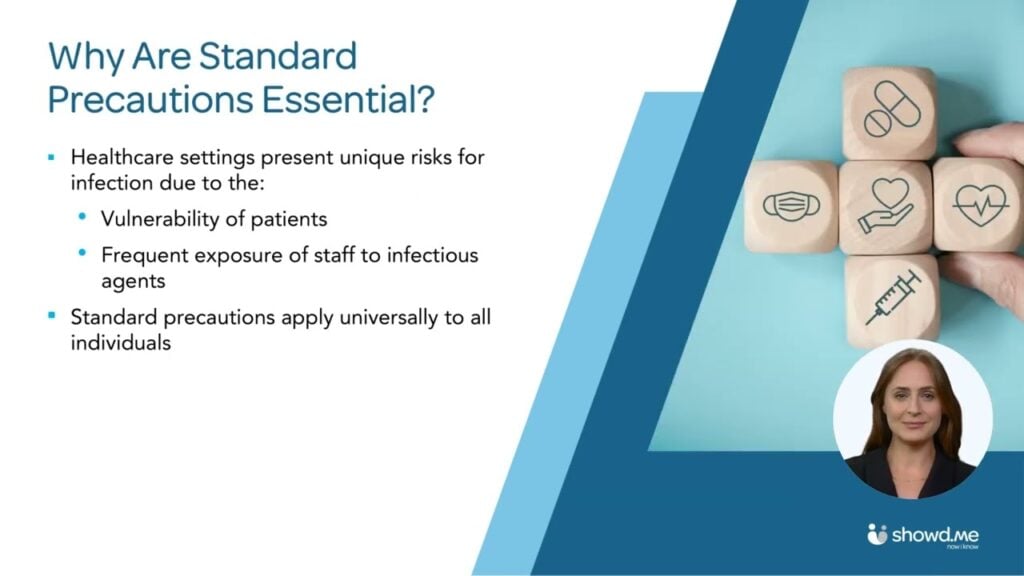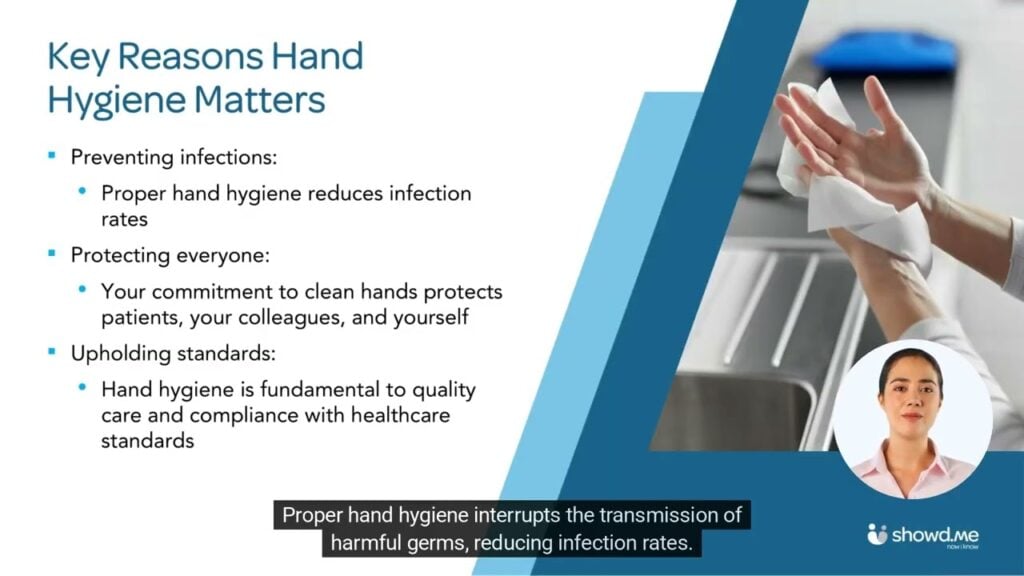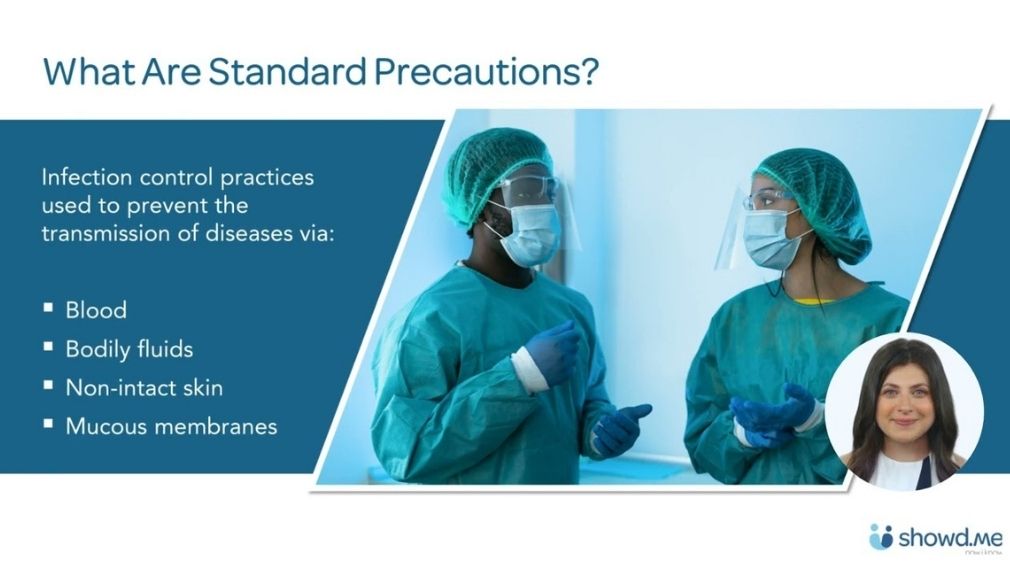COVID-19 isn’t gone… It’s evolving. In 2025, vaccine advisers to the Centers for Disease Control and Prevention (CDC) updated their national vaccine strategy, putting infection prevention back in the spotlight for long-term and post-acute care. For staff, this year’s changes bring both a challenge and an opportunity: protecting residents with complex needs while reinforcing the everyday practices that stop infections before they spread.
What’s New in COVID-19 Vaccine Guidance
Here’s what different this year, and what your facility needs to know:
- New formula. The new monovalent COVID-19 vaccine targets the JN.1 variant and its LP.8.1 sublineage, expected to dominate during the 2025–2026 respiratory season.
- Eligibility shift. Instead of automatic eligibility, the recommendation is now for individuals (six months and older) to make COVID-19 vaccine decisions in consultation with their medical providers. The Advisory Committee on Immunization Practices (ACIP) highlights that among people under age 65, those at higher risk for severe COVID-19 will will benefit the most from vaccination.
- State access. Some states are broadening vaccine access, creating a patchwork of policies. This variation can lead to confusion about availability, coverage, and reimbursement — making it important for facilities to track local updates closely.
Beyond Vaccines: Infection Prevention Measures
Changing vaccine guidance and uneven state policies are creating new challenges for staff and residents seeking COVID-19 protection. Under the federal requirement for shared clinical decision-making, most people must now consult with their medical providers, and sometimes their insurers, before getting vaccinated. That process can create barriers, such as limited provider availability or insurance hurdles.
At the same time, the highly transmissible JN.1 variant underscores the need for added protection. Taken together, these developments mean that vaccination must be paired with strong infection-control practices to truly protect vulnerable populations.
The Centers for Disease Control and Prevention’s new Viral Respiratory Pathogens Toolkit for Nursing Homes recommends a comprehensive strategy that includes vaccines, testing, and infection control practices to stop the spread of respiratory infections.
Here’s a refresher on key infection prevention and control measures in long-term and post-acute care settings.
Hand Hygiene and Respiratory Etiquette
Hand hygiene is still the number-one defense:
- Wash with soap and water when hands are visibly dirty, after direct care, or after removing gloves.
- Use alcohol-based hand rub when hands aren’t visibly soiled.
Respiratory hygiene is equally important since it prevents the spread of droplets:
- Cover coughs and sneezes with a tissue or your elbow.
- Discard tissues immediately, and wash hands.
- Provide masks for residents, staff, and visitors with respiratory symptoms, and encourage physical distancing when possible.
- When community virus levels rise, implement universal masking for staff, visitors, and residents outside their rooms.
PPE and Environmental Cleaning
Personal protective equipment (PPE) acts as a barrier between you and infection:
- Wear gloves when there is the potential for contact with blood or body fluids, adding gowns, masks, or eye protection for tasks involving splashes or sprays.
- Always perform hand hygiene before putting on PPE and after removing it.
Environmental cleaning is equally important:
- Disinfect high-touch surfaces, such as bed rails, doorknobs, light switches, frequently; any area contaminated with blood or body secretions should be promptly disinfected using EPA-registered products.
- Clean shared equipment like vital-sign monitors, therapy tools, and remote controls between residents, and decontaminate them using facility-approved disinfectants.
Sharps and Waste
Safe sharps disposal prevents secondary infections. Dispose of needles and scalpels in puncture-proof containers at the point of use, and never recap.
Biohazardous waste, such as used gloves, masks, or cleaning cloths contaminated with body fluids, should be discarded in clearly labeled red bags or containers.
With prevention in place, the next step is ensuring vaccines reach everyone who needs them.
How Staff Can Support Vaccination
With the updated vaccine guidance, ensure your facility actively communicates the importance of COVID-19 and other recommended vaccinations and helps residents and staff obtain them.
- Stay informed and communicate clearly about vaccine updates. A quick explanation—“This year’s shot matches the JN.1 variant and is available through your medical provider”—helps build trust and encourage uptake.
- Support timely vaccination for residents. Work with providers and leadership to organize clinics or coordinate with pharmacies so doses are administered before peak season. Identifying residents with chronic illnesses is particularly important.
- Make access easier for staff. Help staff navigate insurance authorizations, and arrange on-site clinics when possible
- Educate residents, families, and visitors. Explain why certain precautions—like masking or visitor restrictions—are in place during spikes in activity.
Response to Outbreaks: Testing and Treatment
Even with strong prevention, outbreaks can happen. Speed is key:
- Conduct regular symptom surveillance among residents and staff.
- Test quickly and separate anyone with signs of infection.
- Collaborate with public health authorities if an outbreak is suspected to ensure rapid testing, treatment, and support.
Because COVID-19 evolves quickly, staying flexible and ready to adapt policies is essential.
Conclusion: A Culture of Safety
The CDC advisory panel’s latest vaccine guidance reframes COVID-19 vaccination as a tool within a broader infection-control strategy. When paired with infection-prevention basics—hand hygiene, PPE, cleaning, ventilation, and rapid outbreak response—care teams can safeguard both residents and staff.
Consistency in these practices is key. It creates a culture where safety is visible, infections are rare, and families trust the care environment.
Ask yourself: Is your facility ready for the season ahead?
At Showd.me, we help long-term and post-acute care organizations take the guesswork out of infection prevention. Our platform ensures training is consistent, policies are standardized, and staff are equipped with the knowledge they need—day in and day out.
Related Courses
Frequently asked questions
Even though many people consider the worst of the pandemic behind us, the virus is evolving (for example, the JN.1 variant and its LP.8.1 sublineage) and remains a serious threat, especially for residents of long‑term or post‑acute care facilities. Moreover, the shift in vaccine guidance means vaccination alone isn’t enough; strong everyday infection‑prevention practices are still essential.
-
The new monovalent COVID‑19 vaccine now targets the JN.1 variant and its LP.8.1 sublineage.
-
Rather than blanket eligibility, the recommendation is now for individuals (6 months and older) to consult with their medical provider to decide whether vaccination is right for them—especially those under 65 with lower risk.
-
State‑by‑state variations in access, insurance coverage and reimbursement mean that facilities must actively track local policies.
Facilities should pair vaccination with robust infection‑control practices including:
-
Hand hygiene and respiratory etiquette (e.g., cover coughs, use masks when appropriate)
-
Proper use of PPE (gloves, gowns, masks, eye protection) and environmental cleaning/disinfection of high‑touch surfaces and shared equipment.
-
Safe disposal of sharps and biohazard waste.
-
Rapid outbreak response: symptom surveillance, testing, isolating infected individuals, and coordination with public health authorities.
-
Building a culture of safety where infection prevention is visible, consistent and accepted as part of everyday workflow.
-
Stay informed on latest guidance and communicate clearly and simply about the new shot (“This year’s shot matches the JN.1 variant and is available through your provider”) to build trust.
-
Organize vaccination clinics or coordinate with pharmacies so residents and staff can be vaccinated before peak respiratory‑season.
-
Assist staff with insurance/authorization challenges, provide on‑site vaccination if possible.
-
Educate residents, families and visitors about why precautions (such as masking or visitor restrictions during spikes) remain important.
In the event of suspected or confirmed outbreak:
-
Conduct symptom surveillance among all residents and staff.
-
Test quickly and isolate those with signs of infection to prevent further spread.
-
Work in coordination with public health authorities to ensure testing, treatment and support are deployed immediately.
-
Be flexible and ready to adapt policies and practices, given how quickly viruses evolve.
A culture of safety means that infection prevention isn’t treated as a temporary or occasional task, but as part of everyday operations—where staff expect, accept and execute best practices. It means practices are consistent across shifts, visible to residents and families, and part of the identity of the care environment—so that infections are rare and trust is high.
Training ensures staff know and understand the “how” and “why” of infection prevention, including updated vaccine guidance, PPE usage, hand and respiratory hygiene, cleaning protocols and outbreak response. Technology platforms (like Showd.me’s) help standardize training, track completion, ensure consistency across facilities and shifts, and reduce the guesswork in making sure everyone is prepared.
Leadership should consider:
-
“Are our vaccination strategies aligned with the latest guidance and accessible to all residents and staff?”
-
“Are our infection‑prevention practices (hand hygiene, PPE, cleaning, respiratory etiquette, environmental cleaning) consistently followed and audited?”
-
“Is our staff trained, supported and monitored in these practices?”
-
“Do we have a clear outbreak response plan including testing, isolation and coordination with public health?”
-
“Do we have a culture where safety is visible and engrained—where families, visitors and staff see it, trust it and live it?”
Smaller facilities should assign someone (or a small team) the responsibility of monitoring state‑specific vaccine policies, reimbursement trends and local public health directives. They should build strong relationships with local pharmacies, providers and public health authorities, and integrate regular policy‑update reviews into their safety committee or infection‑prevention committee meetings.
-
Vaccination remains important, but it must live alongside strong infection‑prevention basics.
-
Everyday practices (hand hygiene, PPE, cleaning) matter just as much as vaccines, especially when vaccine guidance becomes more targeted.
-
Outbreak readiness is not optional—it’s essential, given the evolving nature of respiratory pathogens.
-
A culture of safety matters: consistent training, clear communication, visible protocols and buy‑in from staff, residents, families and leadership.
-
Don’t wait for the season to hit—get prepared now, make training and prevention habits part of “business as usual.”






